
|
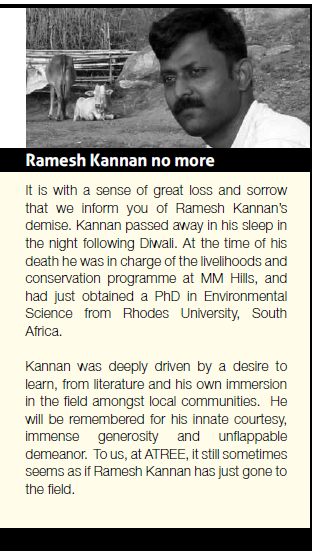
|

The 10th TN Khoshoo Memorial Award and Lecture, held in
December, had a clear 'Himalaya' slant. Avani, a civil society
organization of the Kumaon Himalaya region, received the TN
Khoshoo Award for its focus on community self-reliance and
local, sustainable solutions. The award recognizes researchers
and practitioners who have made an impact on the theory
and practice of doing conservation and promoting sustainable
development. It was instituted in memory of late scientist, ATREE
trustee, and India's first Environment Secretary, Dr TN Khoshoo.
Rashmi Bharti and Rajnish Jain, founders of Avani, spoke to
the audience about their work in Uttarakhand. Avani facilitates
environment-friendly decisions on part of local communities
by disseminating useful information on solar technology, water
resource management, natural textiles and paints, and social
and economic development of rural communities through better
healthcare and micro-finance. It is also a founder member of
the World Mountain Peoples' Association, an organization that
promotes networking and cooperation in the mountain areas
and helps give voice to issues of mountain communities at the
national and international level.
|
|
For the TN Khoshoo Memorial Lecture,
ATREE takes pains to bring to the
audience a speaker with insight,
and with new ideas to share on the
subject of the environment. This
year's speaker at the Memorial Lecture
was His Holiness, the Dalai Lama. His
Holiness, who has made his concern
for the environment evident over years
past, made a philosophical address
on Sacred Values and Conservation,
in which he spoke about the ways
we choose to live and relate to one
another and to the world around us.
Lending to the Himalaya theme was
the exhibit and sale of coffee table
book, Himalaya: Mountains of Life, by
Dr Kamal Bawa, founder trustee, ATREE
and photographer, Sandesh Kadur.
Research
Climate warming in recent decades,
largely attributed to human activities,
is affecting vegetation in tropical
mountain regions of the world.
Scientists report this from a joint
study conducted at ATREE, the Indian
Institute of Science Education and
Research (IISER) at Kolkata, and CIFOR
Indonesia, and published in the journal
Global Change Biology.
Tropical mountain ecosystems
are important for biodiversity and
ecosystem services. They are also
sentinels of global change, including
climate change. Researchers used
satellite data from 1982-2006 for
tropical mountain regions in five
continents ranging from the tropical
Andes to the Himalayas and South
East Asia. They measured changes
in Naturalized Difference Vegetation
Index (NDVI), an index of greenness-a
measure of photosynthetic activity-
|
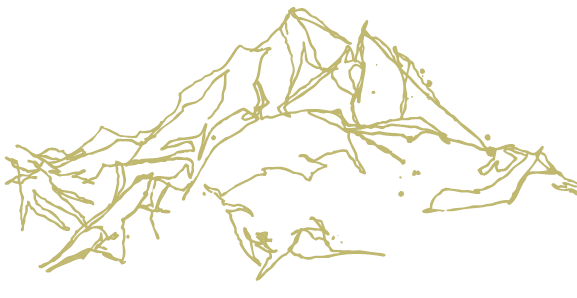
|
|
and then compared these changes
with trends in temperature and rainfall.
The scientists first examined maximum
greenness attained at any site in each
year on record, which is the maximum
foliar biomass attained. They found
that tropical mountain forests first
became greener with time, and
then suddenly reversed to become
browner, starting in the mid-1990s,
in all tropical mountain regions of the
earth. Browning indicates a reduction
in photosynthetic activity. During the
same period, four of the five regions
became significantly warmer, but
rainfall trends were less obvious and
patterns were more complicated.
They also found that the index of
greenness was responding negatively
to temperature in some regions, and
in regions such as the Himalayas
this negative response to warming
intensified over the study period.
In the 1990s, other scientists had
reported that increased temperatures
and reduced input of moisture from
decreased frequency of misty days
were causing a drought-like conditions
in the mountains of Central America.
The new findings on vegetation changes
suggest that such climate change
phenomena may be more widespread
in all tropical mountain regions. The
scientists also realized that after
they had accounted for the effects of
temperature and precipitation, there
|
was residual greening and browning
evident in these mountain regions,
suggesting that other regional and
global environmental changes such as
pollution, aerosols, nutrient deposition
or increased photosynthetic activity
due to enhanced CO2 could be driving
vegetation response in tropical
mountains.
The research paper cautions, “The
decline of biodiversity in species-rich
mountain ecosystems could have
adverse impacts on ecosystem function
and decrease ecosystem services on
which millions of people are dependent.”
Mountain ecosystems, known to be
particularly ecologically sensitive and
vulnerable to climate change, should
be placed in “high priority in global
conservation strategies,” it adds.
Jagdish Krishnaswamy, Convenor,
Suri Sehgal Centre for Biodiversity
and Conservation

|
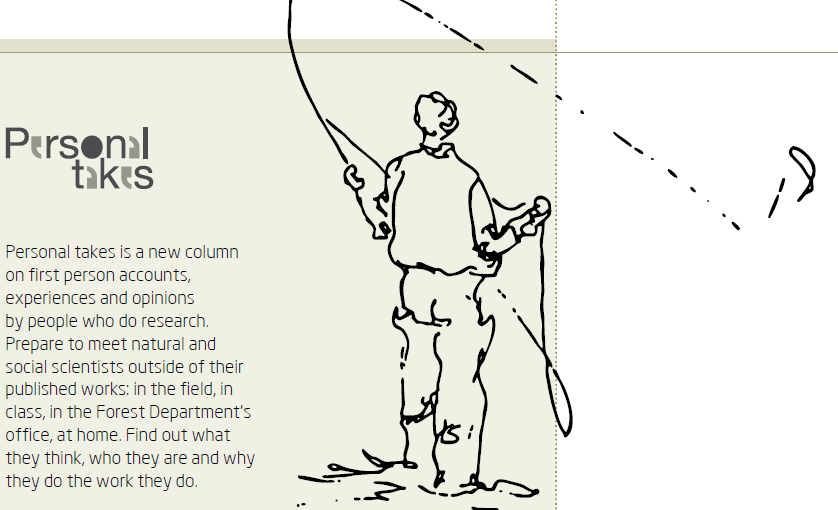 |
Angling: is it good or bad?
Vidyadhar Atkore, PhD batch 2009,
attended a workshop on Western
Ghats Freshwater Fish Conservation:
Strategy and Action in August, in Kochi,
Kerala. Vidyadhar expresses his views on
angling, shared with other delegates.
'On ethical grounds, I strongly feel,
angling should not be allowed for the
following reasons: there are no standard
protocols for guiding anglers on catching
fish for sport; there are no guidelines
for type and size of fish caught; no
guidelines for appropriate size of bait or
hooks.
Even for fish that are caught and
released, how do we know what kind
of post release stress and injuries occur?
How do we know whether such sport
affects breeding? How does one ensure
that gravid females are not caught?
The Mahseer is a sport fish because it
fights back. But both, the Himalayan
(Tor putitora) or Deccan mahseer (Tor
khudree), are also listed as threatened
under the IUCN Red List. So given all the
|
things we do not know about post catch
trauma, does it make sense to target
them for angling?
I agree angling generates revenue which,
maybe, promotes barefoot conservation
efforts. But should we not be thinking
of the wellbeing of the animals? Experts
from taxonomy, behaviour, ecology,
physiology should engage to find wise
solutions to the human activity of sport
fishing. Perhaps, a few river stretches
could be identified merely for 'fish
watching'! Learning about fish natural
history associated with culture and
mythology through images could also
aid conservation in a better sense.'
Vidyadhar Atkore
|
The canopy, which was the last
frontier-after space-to be crossed,
is sometimes referred to as the
'eighth continent'. Safer techniques
to access the heights (developed in
the 1970s) resulted in accelerated
research, but the discoveries are
still coming in, and not in trickles.
Combine this with the current rate
of deforestation, and the urgency in
stepping up our understanding of the
canopy ecosystem and its relation to
biophysical processes, biodiversity
and human kind becomes obvious. In
this scenario, we have a new book on
canopy science, which urges new and
innovative approaches to comprehend
the role of canopy systems.
ATREE's resident canopy team of
Soubadra Devy and T Ganesh, and
canopy expert Meg Lowman have
released a compilation of research
insights, findings and discourses
|
|
presented at the 5th International
Canopy Conference at Bengaluru in
2009. The edited book, Treetops at Risk,
contains some of the latest science on
canopy studies by the world's leading
experts on canopies.
Treetops at Risk raises as many
questions as it attempts to answer in
sections on emerging issues; climate
change; new approaches; education
and outreach; and ecosystem, services
and sustainability. It is a relevant book
because, first, canopy science is still
relatively young, and two, because of
the rate at which we are losing forests/
canopies in developing and developed
countries.
More...
More news on how canopies matter,
even in their sparser forms, as
windbreaks in tea plantations, is
the subject of a new paper. The
paper presents findings on the role
of windbreaks in tea plantations-
how they improve connectivity to
plantation-edge primary forests, and
thereby contribute to/ influence bird
species richness and community
composition. What is remarkable
is that this paper has been written
by undergraduate students who
were part of ATREE's conservation
biology certificate course in 2010.
The students, guided by ATREE PhD
student, Vivek Ramachandran,
persevered through time and peer
reviews to finally be published in
PLoS ONE, a peer reviewed journal on
science. To be published in PLoS ONE
while an undergraduate is quite an
achievement and the team is proud of
the authors. Sreekar R, Mohan A, Das
S, Agarwal P, Vivek R. 2013. Natural
windbreaks sustain bird diversity in a
tea-dominated landscape. PLoS ONE
8(7): e70379. doi:10.1371/journal.
pone.0070379
|
Two major grants will help ATREE
fine-tune focus on interdisciplinary
research and scholarship.
The Royal Norwegian Embassy grant of
Rs. 153 million (NKr 146 million), over
four years, will be used to strengthen
ATREE's interdisciplinary research
by enabling additional resources to
faculty and students, and in part by
establishing academic exchanges with
leading institutions in Norway. Apart
from looking at outcomes from ATREE's
four programmes-Ecosystems and
Global Change; Ecosystem Health
and Human Wellbeing; Land, Water
and Livelihoods; and Forests and
Governance, the grant will especially
look at results pertaining to climate
change incorporated as an umbrella
theme across various research projects.
The USD 250,000 Oak Foundation
endowment will be used to initiate
a coherent programme on climate
change integrated with ATREE's
ongoing work on biodiversity and
sustainable livelihoods issues. This
funding will be used to develop clarity
on biophysical and socio-economic
contexts of climate change-related
vulnerability in the Western Ghats and
Eastern Himalaya region, specifically,
to identify climate impact pathways
in the agro-ecological landscape.
ATREE will soon be looking at faculty
recruitments with expertise on climate
change.
Project grant
ATREE has received a grant of Rs. 3.7
million from UNDP for a six month
scoping study of the Dal Lake. On basis
of this study, ATREE will recommend
a strategy and action plan for
strengthening the ecological integrity
of the lake. The lake, which is a shadow
|
of its former self, has been under
stress due to pressures from release
(till recently) of untreated sewage
from the city and from houseboats and
settlements within the Dal, reduced
water inflows from feeder streams and
wetlands in its catchment, increased
soil erosion from its catchment
area and invasive aquatic species.
ATREE will review these threats on
a watershed basis and in light of
the livelihood requirements of the
dependent population, as well as the
requirements of a growing Srinagar,
and provide recommendations.
Outreach
UNESCO New Delhi Office, in
association with the Ministry of
Environment and Forests, Government
of India, organized a two-day Regional
Conference on 'Conservation and
management of World Natural Heritage
Sites: sharing experiences and best
practices from south Asia' at India
Habitat Centre, New Delhi on 17-18
September, 2013. The conference
was held under the aegis of the World
Heritage Biodiversity Programme –
India (WHBPI) which was implemented
as a UNESCO initiative in four World
Natural Heritage Sites in India, namely
Kaziranga, Manas, Keoladeo and Nanda
Devi National Parks during 2008-
2013. ATREE was the implementing
agency for the two sites of Kaziranga
and Manas in Assam.
Policy makers, park managers,
academia, practioners and other
relevant stakeholders attended the
conference. Representatives from
|
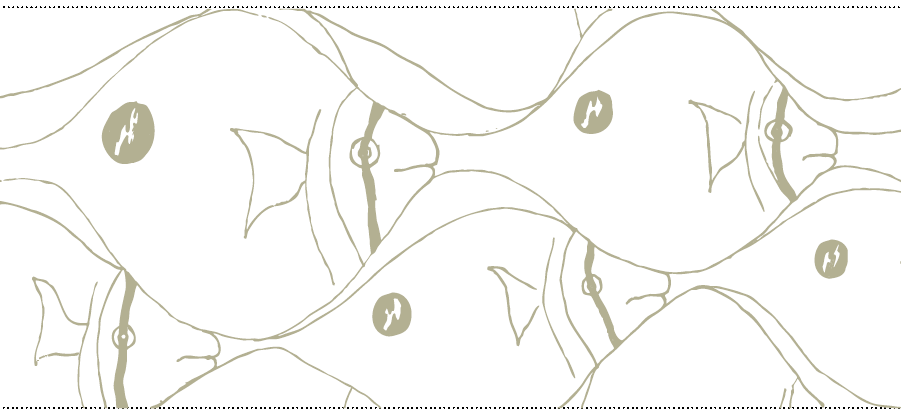 |
|
World Natural Heritage Sites in
Bangladesh, Bhutan, Nepal, Sri Lanka
and India shared experiences and
best practices on conservation and
management from their sites. I, as the
ATREE Coordinator from the Guwahati
Office, presented an overview of the
key outcomes and learning from the
WHBPI project in Assam, outlining early
impacts and sharing thoughts on the
lessons derived from the experience of
implementing the project over the last
five years. ATREE Director, Dr Ganesan
Balachander, was an invited member
on the panel discussion on 'Strategy
for building partnerships and resource
mobilization', where he discussed
ideas on tapping new constituencies
and alternative sources for raising
resources to support projects of this
kind. It may be pertinent to mention
that Dr Balachander played a key role
on behalf of the Ford Foundation as
a primary donor during the inception
of the WHBPI Project more than five
years ago.
Niraj Kakati, Guwahati
|
ATREE and Tamil Nadu Agricultural
University co-organized an expert
consultation on water management
in the Noyyal Basin on 24 September
2013. This was a preliminary activity
of the Adapting to Climate Change
in Urbanizing Watersheds (ACCUWa)
project that proposes to study the
response of stakeholders to water
vulnerability and accessibility in
urbanizing watersheds, especially
as a result of climate change. The
watersheds identified for this threeyear
study are the Arkavathy sub-basin
in Karnataka, and the Noyyal sub-basin
in Tamil Nadu. ACCUWa is supported by
International Development Research
Centre (IDRC), Canada.
The workshop, held at TNAU campus
in Coimbatore, saw participation from
twenty experts representing civil
society groups, government agencies
and academic institutions working
on water-related issues in the region.
The ATREE-TNAU team presented
an analysis of the current water
management situation in the Noyyal
|
basin. The presentations reviewed
the current state of knowledge on
different dimensions-water scarcity,
sustainability, equity and water
quality/public health. The discussions,
which lasted over three hours, helped
clarify a future research agenda for the
Noyyal. Look out for a situation analysis
on water management in the Noyyal
River basin, to be published soon as
part of the Centre for Environment and
Development Discussion Paper series.
Veena Srinivasan, Fellow, Centre for
Environment and Development
The CEPF-ATREE Western Ghats
Regional Implementation Team (RIT),
represented by team lead, Jagdish
Krishnaswamy and Coordinator,
Bhaskar Acharya, participated in the
RIT Exchange Programme held in
Washington DCUSA in mid-September.
Thirteen RITs from across the world
exchanged information on the status
of their respective portfolios and the
hotspots they worked in. Emphasis
|
|
was on lessons learnt, challenges
faced and success achieved in
maintaining the core priorities of the
programme. The team also met donor,
Global Environment Facility, at their
headquarters, on the Western Ghats
portfolio.
Other CEPF activities in India
CEPF and Foundation for Ecological
Research, Advocacy and Learning
(FERAL), a CEPF grantee, conducted a
workshop on 'Science and practice of
linking Periyar–Agasthyamalai landscape
for large mammal conservation'
to identify existing barriers and
potential threats to connectivity at
landscape and regional scale, as well
as enumerate the challenges and
tradeoffs in maintaining and restoring
connectivity. ATREE Regional
Implementation Team (RIT) member,
R. Ganesan, attended the workshop,
held in the first week of August.
RIT Coordination Unit team member,
Cynthia Sinclair, participated in a
workshop conducted by a first time
grantee, Sahyadari Nisarga Mitra,
working on vulture conservation in
the Sahyadri-Konkan region of the
Western Ghats. This served as a good
opportunity for attendees to network
with government establishments, the
scientific community, civil society
organizations and students, for vulture
conservation.
Keeping busy further south, RIT
member Priyadarsanan Dharma Rajan
attended the Western Ghats Freshwater
Fish Conservation Strategy and Action
workshop held in mid-August at Kochi.
It was organized by Navadarshan
Public Charitable Trust (NPCT) as part
of its CEPF grant activity. The objective
|
of the workshop was to facilitate
interactions between experts from the
scientific community on freshwater
fish taxonomy, conservation and policy
implementation.
Cynthia Sinclair and Bhaskar Acharya,
CEPF RIT team
Mandala plastic cleaning campaign
and Ayilyam makom
The third 41-day long plastic cleaning
campaign in connection with the
Sabrimala Mandala season was
successfully concluded on 29th
December 2013 with more than
75 sacks of plastic and other nondegradables
collected by fisher-folk
and clam collectors. In 2011 and
2012, 45 and 70 sacks of plastic
were collected, respectively. Shri SD
Shibulal, CEO, Infosys was the chief
guest at the valedictory function. The
collected plastic has been picked for
use in road construction. In the last
two years, the sacks have contributed
to the construction of two Panchayat
roads.
Ayilyam makom is an annual ritualistic
prayer for lake health. The festival
was revived by ATREE a few years ago
with the idea that this reverence could
also persuade community practical
action for ecological health of the
lake. Ayilyam in Thulam (Malayalam
month) coincides with heavy showers
and thunderstorms of the northeast
monsoon. It is regarded as breeding
time for many fishes in Vembanad
Lake. With all fisherfolk abstaining
from fishing on that day, the ritual
gains ecological significance. This
year, Ayilyam makom was observed
on 28 October 2013 by four different
communities.
|

Jalapaadom news
Alappuzha-based environmentalist and
long-time ATREE partner, KV Dayal,
initiated seventy nine students and
teachers into the basics of organic
farming. He talked of preserving links
in the agriculture food chain, of useful
'pests' and 'predators' in the ecosystem,
with the help of which it is possible
to farm without chemicals. Mr Dayal
gave a tour of his home garden while
explaining his experiments in organic
farming practices. He also spoke of the
various uses of the medicinal plants he
was cultivating in his home garden.
Retired Deputy Director in Agriculture
Department, Govt. of Kerala, PJ Joseph,
supported this with more detail on
pest management through tricho-cards
and Integrated Pest Management; the
use of biofertilizers like Rhizobium
and Azospirillum, which build up
micro-flora and improve soil health,
and a DIY demo on how to prepare
biofertilizer cultures. The lecture on
organic pesticides and weedicides was
followed by a documentary tracing the
success of a farmer using integrated
organic farming methods.
Sixteen schools and five colleges
from Alppuzha and Kottayam districts
participated in this workshop, held on
24th August. This was a Jalapaadom
exercise (Jalapaadom means 'lessons
in water', and is the flagship programme
for schools and colleges by ATREE's
Vembanad Community Environmental
Resource Centre).
|
|
A teacher training workshop of the
Jalapaadom programme for the
academic year 2013-2014 was held
earlier, on 4 July, at Alappuzha, CERC,
ATREE. The group mapped out the
year's plan for workshops on recycling,
organic farming, waste management,
as well as nature camps in wildlife
sanctuaries or reserve forests of
Kerala, training for research projects
by schools that could be showcased in
the Students' Wetland Congress, plus
other activities on the annual agenda
of the programme. Teachers from
eighteen schools of Alappuzha and
Kottayam districts participated in the
workshop.
Jojo TD, Vemabanad
New
Recognitions
Srinivasan, Veena received the 2012
Water Resources Research Editor's
Choice Award for paper 'The nature
and causes of the global water crisis',
American Geophysical Union.
People
Kavya Krishna joined as Research
Assistant; Nikhil Raj, Apoorva, Nakul
Mohan Heble and Kumar D joined
as Research Associates. Velavan as
Junior Research Fellow; Kadambari
Anantaraman Senior Research Fellow
in the Land Water Livelihoods team;
Snehalatha Vadigi as Senior Research
Associate on the Banni project; Rutuja
Dhamale joined as consultant with Abi
Tamim Vanak's grasslands team; Shiv
Subramanya has rejoined as Web and
Database Coordinator; Muneeswaran
M has joined as Project Coordinator
in the Ecoinformatics Lab. Lokesh
D., Ramachandariah, Nagendra P.,
Guruswamy, Sathish and Manjunath B.
K. joined as field assistants. We also
have twelve new students in the 2013
|
PhD batch: Soumyajit Bhar, Yamini
Virginia John, Sahiti Sanaka, Rahul
Muralidharan, Ramya Ravi, Sony R K,
Rashmi Mahajan, Rashmi Rekha Sharma,
Ranjeet Kumar Sahani, Nachiket Kelkar,
Hussain Ebrahim, Annesha Chowdhury.
Workshops organized
Abi T. Vanak. Workshop on
'Conservation of semi-arid savanna
grasslands and their associated fauna'.
Funded by Suri Sehgal Centre for
Biodiversity and Conservation. SCCS,
Bengaluru. 25 Sept 2013.
Ethics in human and animal research.
Organized by Krithi Karanth, Abi T.
Vanak and Kartik Shanker. Student
Conference on Conservation Science
(SCCS), Bengaluru. 27 Sept 2013.
Vidyadhar Atkore conducted a
workshop on 'Freshwater conservation
biology: concepts and techniques' on
25th September at SSCS, Bengaluru.
The other instructors were Robin
Kurien, Tarun Nair, and Nachiket Kelkar
(of the 2013 ATREE PhD batch).
Sharad Lele and Veena Srinivasan
(ATREE) and D. Suresh Kumar (TNAU).
Expert consultation on Noyyal River
Basin. Sponsored by IDRC Canada.
Coimbatore. 24 September 2013.
Publications
Books
Lowman, M., S. Devy, T. Ganesh (Eds.).
2013. Treetops at Risk: Challenges
of Global Canopy Ecology and
Conservation. Springer publication.
Hardcover. ISBN 978-1-4614-7160-8.
ISBN 978-1-4614-7161-5 (eBook)
|
Papers published in edited books
Elmqvist, T., M. Fragkias, J. Goodness,
B. Guneralp, R. McDonald, P.
Marcotullio, R. I. McDonald, S. Parnell,
M. Schewenius, M. Sandstad, K. C.
Seto, C. Wilkinson, with: M. Alberti,
C. Folke, N. Frantzeskaki, D. Haase,
M. Katti, H. Nagendra, J. Niemelä, S.
T. A. Pickett, C.L. Redman, K. Tidball,
2013. Stewardship of the biosphere
in the urban era. In: Urbanization,
biodiversity, and ecosystem services:
challenges and opportunities (ed T.
Elmqvist et al.) Pp. 719-746. Springer.
Lele, S. 2013. Environmentalisms,
justices, and the limits of Ecosystems
Services Frameworks. In: The justices
and injustices of ecosystems services
(ed T. Sikor). Pp. 119-139. Oxon, UK:
Earthscan/Routledge.
Nagendra, H., H. S. Sudhira, M.
Katti and M. Schewenius. 2013.
Sub-regional assessment of India:
effects of urbanization on land use,
biodiversity and ecosystem services.
In: Urbanization, biodiversity, and
ecosystem services: challenges and
opportunities (ed T. Elmqvist et al.) Pp.
65-74. Springer.
Purushothaman S., R. Abraham and
S. Patil. 2013. Tropical farms as
socio-ecological systems-Tools and
assessment. In: Cultivating Diversity!
A handbook of transdisciplinary
approaches to agrobiodiversity
research (eds Christinck A. and M.
Padmanabhan). Germany: Margraf
Publishers.
Ritchie, E. G., C. R. Dickman, M. Letnic,
and A. T. Vanak. 2013. Dogs as predators
and trophic regulators. In: Free-ranging
dogs and wildlife conservation (ed
Gompper, M.). UK: Oxford University
Press.
Sudhira, H. S. and H. Nagendra. Local
assessment of Bangalore: graying
and greening in Bangalore-impacts
of urbanization on ecosystems,
ecosystem services and biodiversity.
|
|
In: Urbanization, biodiversity, and
ecosystem services: challenges and
opportunities (ed T. Elmqvist et al.)
Pp. 75-91. Springer.
Vanak, A. T., C. R. Dickman, E. A. Silva-
Rodriguez, and J. R. A. Butler. 2013.
Top-dogs and under-dogs: Competition
between dogs and sympatric
predators. In: Free-ranging dogs and
wildlife conservation (ed Gompper, M.).
UK: Oxford University Press.
Peer reviewed articles
Aravind, N. A. 2013. Potential of
social network and internet media
for biodiversity mapping and
conservation. Current Science 105(3):
291-293.
Aravind, N. A., K. N. Ganeshaiah and R.
Uma Shaanker. 2013. Indian monsoons
shape dispersal phenology of plants.
Biology Letters 9(6): 20130675.
Belsare, A. V. and A. T. Vanak. 2013. Use
of xylazine hydrochloride-ketamine
hydrochloride for immobilization of
Indian fox (Vulpes bengalensis) in field
situations. Journal of Zoo and Wildlife
Medicine 44(3): 753-755.
Borah, J., T. Sharma, D. Das, N. Rabha, N.
Kakati, A. Basumatary, M. Firoz Ahmed
and J. Vattakaven. 2013. Abundance
and density estimates for common
leopard Panthera pardus and clouded
leopard Neofelis nebulosa in Manas
National Park, Assam, India. Oryx
doi:10.1017/S0030605312000373.
Chetana, H. C. and T. Ganesh 2013.
Reconciling natural history and
species ecology: Myristica beddomei
(Myristicaceae) in the Western Ghats,
India. Tropical Conservation Science
6(5):663-673.
Delsink, A., A. T. Vanak, S. Ferreira and
R. Slotow. 2013 Biologically relevant
scales in large mammal management
policies. Biological Conservation 167:
116-127. http://dx.doi.org/10.1016/j.
biocon.2013.07.035
|
M. Paramesha. 2013. Interdisciplinary
research: way forward for biodiversity
conservation.Current Science 105(9):
1202-1203.
Harisha, R. P. and S. Padmavathy.
Knowledge and use of wild edible
plants in two communities in Malai
Madeshwara Hills, Southern India.
2013. International Journal of Botany
doi: 10.3923/IJB.2013
Jaganmohan, M., L. S. Vailshery and H.
Nagendra. 2013. Patterns of insect
abundance and distribution in urban
domestic gardens in Bangalore, India.
Diversity 5: 767-778; doi:10.3390/
d5040767
Jorge, A., A. T. Vanak, M. Thaker, C.
Begg and R. Slotow. 2013. Costs and
benefits of the presence of leopards
to the sport-hunting industry and
local communities in Niassa National
Reserve, Mozambique. Conservation
Biology 27(4): 832-843.
K. Abhisheka, J. Patrick David, M.
B. Prashanth, K. S. Seshadri and T.
Ganesh. 2013. First detailed survey of
waterbirds in Tirunelveli and Tuticorin
districts, Tamil Nadu, India. Journal of
Threatened Taxa 5(12): 4641–4652.
K. Abhisheka, N. A. Aravind and T.
Ganesh. 2013. Linking kids and
conservation: some thoughts on the
vacation training programme. Current
Science 105(11)1464.
Krishnaswamy, J., M. Bonell, B.
Venkatesh, B. K. Purandara, K.
N. Rakesh, S. Lele, M. C. Kiran, V.
Reddy and S. Badiger. 2013. The
groundwater recharge response
and hydrologic services of tropical
humid forest ecosystems to use
and reforestation: Support for the
“Infiltration-evapotranspiration tradeoff
hypothesis”. Journal of Hydrology
498: 191-209.
Krishnaswamy, J., R. John and S.
Joseph. 2013. Consistent response of
vegetation dynamics to recent climate
|
change in tropical mountain regions.
Global Change Biology doi: 10.1111/
gcb.12362
Lele, S. 2013. Rethinking sustainable
development. Current History
112(757): 311-316.
Mairota, P., V. Leronni, W. Xi, D.
Mladenoff and H. Nagendra. 2013.
Using spatial simulations of habitat
modification for adaptive management
of protected areas: Mediterranean
grassland modification by woody
plant encroachment. Environmental
Conservation doi:10.1017/S037 689
291 300043X.
Mandle, L. T. Ticktin, S. Nath, S. Setty
and A. Varghese. 2013. A framework
for considering ecological interactions
for common non-timber forest product
species: a case study of mountain
date palm (Phoenix loureiroi Kunth)
leaf harvest in South India. Ecological
Processes 2:21.
Matta, J. R., R. Ghate and H. Nagendra.
2013. The sustainability of traditional
community forest management
systems: lessons from India. Unasylva
240: 50-56.
Mohana Kumara P., Soujanya K.
N., Ravikanth G., Vasudeva R.,
Ganeshaiah K. N., Uma Shaanker R.
2013. Production of the chromane
alkaloid, rohitukine and its attenuation
in endophytic fungi isolated from
Dysoxylum binectariferum Hook.f
and Amoora rohituka (Roxb).Wight
& Arn. Phytomedicine http://dx.doi.
org/10.1016/j.phymed.2013.09.019
Nagendra, H. Unnikrishnan and S. Sen.
2014. Villages in the city: spatial and
temporal heterogeneity in rurality and
urbanity in Bangalore, India. Land 3:
1-18.
Nagendra, H., B. Reyers and S. Lavorel
(2013). Impacts of land change
on biodiversity: making the link to
ecosystem services. Current Opinions
in Environmental Sustainability 5: 503-508.
|
|
O. K. Remadevi, N. Sapna Bai, T. O.
Sasidharan, M. Balachander and P.
Dharmarajan. 2013. Attempts at
controlling Teak Defoliator (Hyblaea
puera Cramer, Lepidoptera, Hyblaeidae)
with the entomopathogenic fungus,
Metarhizium anisopliae (Metsch.):
laboratory, nursery and field
trials. International Journal of Pest
Management 59(3): 236-242 doi:
10.1080/09670874.2013.832438
Punjabi, G. A., R. Chellam, A. T. Vanak.
2013. Importance of native grassland
habitat for den-site selection of Indian
foxes in a fragmented landscape . PLOS
ONE 8(10): e76410.
Purushothaman, S., B. K. Thomas, R.
Abraham and U. Dhar. 2013. Beyond
money metrics: alternative approaches
to conceptualising and assessing
ecosystem services. Introduction to
the INSEE special section. Conservation
and Society 11(4)
Purushothaman, S., S. Patil, I. Patil, I.
Francis and I. Nesheim. 2013. Policy and
governance for sustaining livelihoods
and natural resources in small
farms-a case study in Karnataka.
Indian Journal of Agricultural Economics
68(2): 240-258.
Selier, S. J., B. R. Page, A. T. Vanak,
R. Slotow. 2014. Sustainability of
elephant hunting across international
borders in Southern Africa: a case
study of the Greater Mapungubwe
Transfrontier Conservation Area.
The Journal of Wildlife Management
78(1):122-132.
Shivaprakash, K. N., G. Ravikanth, N.
Barve, J. Ghazoul, K. N. Ganeshaiah,
R. Uma Shaanker. 2013. Do ecological
niche model predictions reflect the
adaptive landscape of species?: A test
using Myristica malabarica Lam., an
endemic tree in the Western Ghats,
India. PLOS ONE 8(11): e82066.
doi:10.1371/journal.pone.0082066
|
Sreekar R., A. Mohan, S. Das, P. Agarwal,
R. Vivek. 2013. Natural windbreaks
sustain bird diversity in a teadominated
landscape. PLOS ONE
8(7): e70379. doi:10.1371/journal.
pone.0070379.
Srinivasan, V., B. K. Thomas, P. Jamwal
and S. Lele. 2103. Climate vulnerability
and adaptation of water provisioning
in developing countries: approaches
to disciplinary and research-practice
integration. Current Opinion in
Environmental Sustainability 5: 378-383.
Sumangala R. C., P. Mohana Kumara,
R. Uma Shaanker, R. Vasudeva and G.
Ravikanth. 2013. Development and
characterization of microsatellite
markers for Dysoxylum binectariferum,
a medicinally important tree species
in Western Ghats, India. Journal of
Genetics doi: 10.1007/s12041-013-
0274-7
Sumangala R. C., R. Uma Shaanker,
S. Dayanandhan, R. Vasudeva and
G. Ravikanth. 2013. Identification of
novel microsatellite markers for Saraca
asoca, a medicinally important tree
species in India. Journal of Genetics
doi: 10.1007/s12041-013-0277-4
Thriveni H. N., Sumangala R. C,
Shivaprakash K. N, Ravikanth G,
Vasudeva R and Ramesh Babu H.N
2013. Genetic structure and diversity
of Coscinium fenestratum: a critically
endangered liana of Western Ghats,
|
India. Plant Systematics and Evolution
doi: 10.1007/s00606-013-0890-y
Vailshery, L. S., M. Jaganmohan and H.
Nagendra. 2013. Effect of street trees
on microclimate and air pollution in a
tropical city. Urban Forestry and Urban
Greening 12: 408-415.
Vanak, A. T., D. Fortin, M. Thaker, M.
Ogden, C. Owen, S. Greatwood, and
R. Slotow. 2013. Moving to stay in
place: behavioral mechanisms for
coexistence of African large carnivores.
Ecology 94:2619-2631.
Veríssimo, D., A. Kanagavel, K. S.
Seshadri, R. Raghavan. 2013. The
tragedy of the nature photography
commons. Asian Journal of Conservation
Biology 2(1): 1-2.
Popular press
Aditya, V, T Ganesh and G Malla.
Eastern Ghats' tragedy. Sanctuary Asia,
December 2013.
Basnett, S. 2103. Rhododendrons:
beyond just beautiful flowers.
Sanctuary Asia. December 2013.
Paramesha, M. Baduki, badukalu
bidi (Live and let live). Prajavani. 11
December 2013.
Krishnaswamy, J. A warning to tropical
mountains. Deccan Herald. 29 October
2013.
|
 |
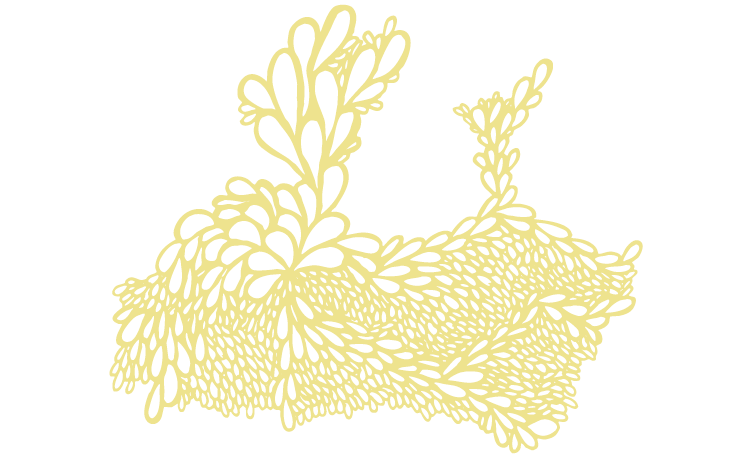 |
|
Harisha, R.P. The leafy option. Down to
Earth. September 2013.
Prashanth, M. B., M. Mathivanan and
T. Ganesh. 2013. Owls of the forest's
edge. Sanctuary Asia. August 2013.
Unnikrishnan, H. 2013. Lakes in the
Anthropocene. In Global Water News
newsletter. A newsletter of the Global
Water System Project.
Papers presented in seminars/
workshops/symposia/
conferences
Atkore, V. Poster on 'What drives
fish diversity in the rainforests of the
Central Western Ghats, India' at SCCS,
Bengaluru. Co-authors J. Krishnaswamy
and K. Shanker.
Gode, A., K. A. Razak. 2013.
Characterization of forest canopy gaps
caused by landslides using high density
airborne laser scanning. Symposium
on Geoinformation, Kuala Lampur,
September 2013.
Lele, S. Seminar on 'Primary education
and ecology'. Purnapramati School,
Bengaluru. 1 Jan 2014.
Lele, S. Delivered the keynote and
presidential address on 'Arkavathy:
|
from rejuvenation to governance' at
public consultation on Arkavathy
rejuvenation organized by Svaraj
and Arkavathy Kumudvathi Nadi
Punashchethana Samiti. Bengaluru.
2 July 2013.
Lele, S. Participated in panel
discussion on water cooperation at the
Sambandh Festival 2013 organized
by Department of Sociology, Christ
University. Bengaluru, 23 August 2013.
Lele, S. Water management and
watershed development at the ruralurban
interface. At workshop on Forest
Conservation and Ecosystem Services;
and Water Use, Livelihoods and
Biodiversity. Organized by MacArthur
Foundation. Bengaluru. 29 July 2013.
Niphadkar, M. Testing geospatial
modeling methods for management of
invasion of understorey shrub Lantana
camara in tropical forests of Western
Ghats, India. Authorship of Niphadkar
M., Ficetola G. F., Bonardi A., Nagendra
H., Padoa-Schioppa E., Adamo M.,
Tarantino C., Hiremath A. Presented
at the 12th International Conference
on Ecology and Management of Alien
Plant Invasions. Pirenopolis, Goias,
Brazil. 22-26 September 2013.
Paramesha M. Functional corridors
|
for wildlife conservation in human
dominated landscape of the Western
Ghats, India. SCCS 2013, Bengaluru.
25-28 September 2013.
Setty, S. Conservation and monitoring of
non-timber forest products with special
reference to gooseberry and rock bees in
south India. At seminar on Sustainable
Management of Non-Timber Forest
Products organized by Indira Gandhi
National Forest Academy, Dehradun.
11-12 December 2013.
Setty, S. Sustainable harvest of Non-
Timber Forest Products. Natural
Resource Management course for
senior IAS officers. 16-20 December
2013 at Administrative Training
Institute, Mysore.
Srinivasan, V. Adapting to Climate
Change in Urbanizing Watersheds
(ACCUWa)-a situation analysis. IDRCCCW
workshop organized by IDRC
Canada. Kathmandu. 18 June 2013.
Invited lectures
Lele, S. Sustainability, environmentally
sound development and the role of
technology. National Institute of
Advanced Studies, Bengaluru. 24 July
2013.
|
|
Nagendra. H. 2013. Deforestation and
urbanization: sustainability and change
in indian cities and forests. Public
lecture, Macalester College, Saint
Paul Minnesota. 30 October 2013.
Also at Carleton College, Northfield
Minnesota. 2 October 2013.
Nagendra. H. 2013. Graying and
greening in Bangalore: impacts of
urbanization on ecology. Department
of Political Science, Carleton College,
Northfield Minnesota. 2 October 2013.
And at Jan Serie Center for Scholarship
and Teaching, Macalester College, Saint
Paul Minnesota. 28 September 2013.
Nagendra. H. 2013. Urbanization of
habitats: challenges for India. In high
level structured discussion (panel),
Resilient Design for Sustainable
Urbanization: In Celebration of World
Habitat Day 2013, UN Habitat, United
Nations Headquarters, New York.
30 September 2013.
|
Ravikanth, G. Mapping-a new tool
to bioprospecting. At workshop on
Bioprospecting and Bioresources:
From Molecules to Products. At School
of Bio Sciences and Technology
(SBST), VIT University, Vellore. 21-23
October 2013 . The workshop was
jointly sponsored by the Joint Science
Education Programme of Academics
(Indian Academy of Sciences,
Bengaluru, Indian National Science
Academy, New Delhi and The National
Academy of Sciences, Allahabad)
Ravikanth, G. Molecular approaches
in conservation and management of
forest resources. At the workshop on
Recent Advances in Forestry Research.
Organized by Karnataka Science and
Technology Academy, Bengaluru and
College of Forestry, Ponnampet at
College of Forestry, Ponnampet on 25
November, 2013.
|
Ravikanth, G. Molecular approaches in
quality and conservation of medicinal
plants. At the National Conference
on New Frontiers in Medicinal Plant
Research and special meeting on
Medicinal Plants for Livelihood Security
and Community Empowerment in
Eastern Himalayas. Organized by
Sikkim University, Gangtok. 3-5
October 2013.
Shivanna, K. R. Seedling recruitment,
a major reproductive constraint
responsible for species vulnerability.
At workshop on Reproductive Biology
for Conservation. University of Jammu.
22-26 Nov 2013. Also delivered this
lecture on 25th and 26th November
2013 at Biodiversity and Biotechnology
Centre, Rajouri, Jammu and Kashmir.
Thomas, B. K. Livelihoods and SDGs.
The Energy and Resources Institute,
Bengaluru, during the Regional
Consultation on Designing Sustainable
Development Goals. 10 July 2013.
|
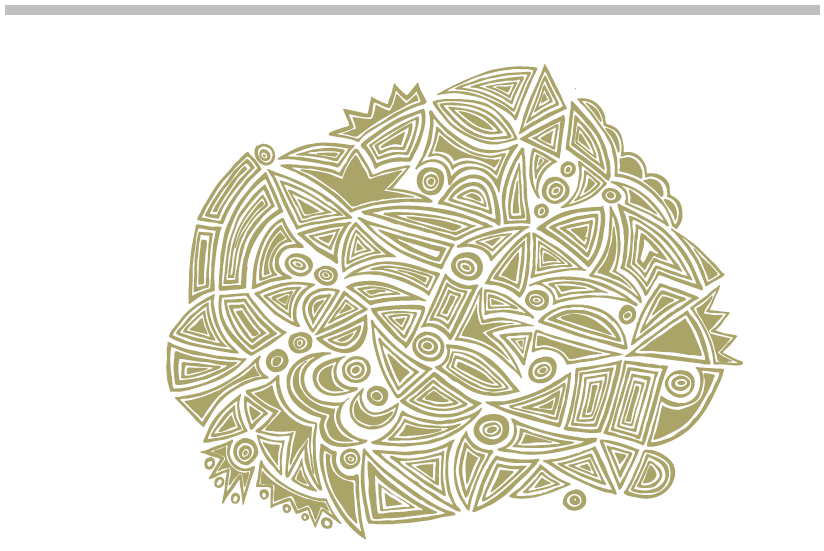 |
 www.atree.org www.atree.org |
Head Office
Bangalore
Royal Enclave, Sriramapura
Jakkur Post, Bangalore 560 064
Tel: +91-80-23635555,
Fax: +91-80-23530070
Regional offices
Eastern Himalayas
Khangsar House,
Above Brahmakumari, Development Area
Gangtok 737101
Tel: +91-3592-206 403
New Delhi
2nd Floor, 1, K Commercial Complex
Birbal Road, Jangpura Extension
New Delhi 110014
Tel: +91-11-2432 3133
Governing Board
Dr. Kamaljit S. Bawa (Chairman)
Dr. K. N. Ganeshaiah
Dr. R. Uma Shaanker
Mr. Darshan Shankar
Ms. Rohini Nilekani
Dr. Surinder M. Sehgal
Ms. Seema Paul
Ms. Pheroza J. Godrej
Dr. K. S. Jagadish
Mr. A. N. Singh
Dr. S. Natesh
Dr. Ganesan Balachander(ex-officio)
Dr. Priyadarsanan Dharma Rajan
(faculty)
Executive Committee
Dr. Ganesan Balachander (Chair)
Dr. Bejoy Thomas
Dr. Siddhartha Krishnan
Dr. Siddappa Setty
Mr. Ramesh N
Dr. Priyadarsanan Dharma Rajan
Dr. Sarala Khaling (ex officio)
Mr. Sridhar R Iyengar (ex officio) |
Advisory Board
Pl note: * will also serve on the Faculty Advisory Committee
* Dr. Vijay Raghavan, Director, National Centre for Biological Sciences, Bengaluru
Dr. Raghavendra Gadagkar, INSA SN Bose Research Professor and JC Bose National Fellow, Centre for Ecological Sciences, Bengaluru
* Dr. Amita Baviskar, Associate Professor, Institute of Economic Growth, Delhi
* Dr. Navroz K. Dubash, Senior Fellow, Centre for Policy Research, New Delhi
* Dr. Gita Sen, Professor, Centre for Public Policy, Indian Institute of Management, Bengaluru
Mr. Raj Khoshoo, Senior Vice President, Siemens PLM, CA, USA
Ms. Kalpana Sharma, independent journalist, Mumbai
Dr. Ravi Chopra, Director, People's Science Institute, Dehradun, Uttarakhand
* Dr. S. P. Singh, Former Vice Chancellor, Advisor, State Planning Commission, Government of Uttarakhand, Dehradun, Uttarakhand
Dr. Ramesh Singh, Director, Learning, Monitoring and Evaluation, Office of the Director of Programs, Open Society Institute, New York
Convenors and Programme Leaders
Dr. Jagdish Krishnaswamy,
Ecosystem Services and Human Well-being and Convenor, Suri Sehgal Centre for Biodiversity and Conservation
Dr. Sharachchandra Lele,
Forests and Governance and Convenor, Centre for Environment and Development
Dr. Priyadarsanan Dharma Rajan and Dr. Ankila Hiremath,
Ecosystems and Global Change
Dr. Shrinivas Badiger
Land Water and Livelihoods
Academy
Dr. Nitin Rai,
Convenor, Academy for Conservation Science and Sustainability Studies
This newsletter has been put together from reports by ATREE folk. Design and lay out is by Salil Sakhalkar. Editing by Samuel Thomas, Ganesan Balachander and Meetu Desai. |
|

